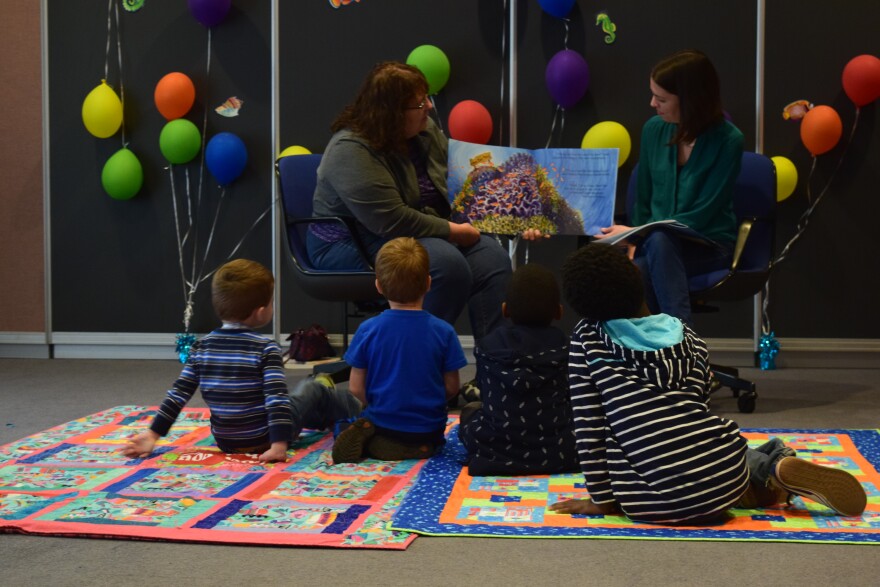Science can be complicated, and often difficult to explain, especially to kids.
The University of Delaware is trying to tackle that issue by bringing science, art, and psychology students together in a new course. Their assignment: create storybooks aimed at clearly explaining scientific research on an invasive fish to children ages 3 to 6.
Delaware Public Media’s Katie Peikes recently visited the UD’s Morris Library to watch librarians read some of the books to their target audience.
Four children crowded enthusiastically around University of Delaware librarian Lauren Wallis as she opened a book called “Commotion in the Ocean”.
“Why is that commotion in the ocean?” Jack Grotti, 3, asked Wallis.
“Let’s see. We’re gonna find out,” Wallis said.
And she began to read.
“Under the wide open seas by the algae trees, groupers lived in their coral garden…”
Minutes later, Wallis finished the book, and she asked the children a couple of questions about what they learned, starting off with what the main problem of the story was.
The book is the product of a course launched by University of Delaware professors this past semester called “Science Through Storybooks.” It married three subjects - science, art and psychology - to create storybooks out of dense research on invasive fish called “lionfish”.
One book was about how lionfish are unique predators. Another looked at how lionfish invade a nursery reef and cause it to have too much algae.
“It’s really important when you do science, that you’re able to communicate it to the general public,” said Danielle Dixson, an assistant professor of marine science and policy at UD. “That lets people know what you’re doing and why it’s important and why it affects them.”
Dixson has had a vested interest in communicating science through storybooks ever since she went to Fiji to study coral reefs.
While there, she noticed some of the children were littering. As a result, she wrote a book about a shark that ate a soda can and got a stomach ache, and read it to the children to help them understand how littering affects sea life.
It sounds easy, but Dixson said simplifying science is actually pretty daunting, particularly when the audience is young children.
“I think the real challenge is making sure that you keep the science but have a background story that doesn’t distract from the science - that can be much more difficult. And that’s just trial and error really,” Dixson said.
Despite the challenge, explaining concepts to children is a great place for scientists to start learning how to communicate their research, said marine science major Taylor Tewksbury.
“If you can explain it to someone who is three, four, five, six years old, then you can really know that you have really mastered the information and you can explain it to anybody,” Tewksbury said.
Children as young as three turned up a the reading a week ago, and students saw the results of their efforts to communicate scientific research to that demographic. Three-year-old Jack Grotti’s twin brother, Sam, said he “only learned one thing about lion fish.”
“Because of their spines, they sting,” Grotti said.
This is the first time UD offered the course. Dixson said it seemed like most children could follow the stories, and, for the most part, correctly answer questions about the content.
The course was built using a $10,700 grant. UD doesn’t have the funding to offer it again in the fall, but Dixson said they want to bring back in the future, if money can be found.
In the meantime, she’ll share what she learned teaching the course with her UD colleagues this summer, hoping to help them discover ways to make communicating about their work child’s play.



